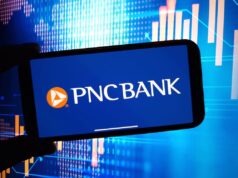Banco Santander, Spain’s largest bank, is preparing to issue a fiat-backed stablecoin, potentially pegged to both the euro and the U.S. dollar, in a major push to integrate digital currencies into its mainstream financial services. The initiative is currently in its pilot phase via the bank’s digital subsidiary, Openbank. With this move, Santander becomes one of the first European banks aiming to offer regulated crypto services directly to retail users.
This development reflects a broader trend among traditional financial institutions, or TradFi players, who are working to catch up with the pace of crypto innovation. It also marks a strategic use of regulatory momentum. With the European Union’s MiCA framework now in force, banks finally have a unified legal path to issue stablecoins within a clear regulatory environment.
MiCA as Catalyst: Europe’s Regulatory Opening
For years, regulatory uncertainty deterred banks from launching crypto initiatives. That changed with the arrival of MiCA, the EU’s landmark crypto regulation. Unlike the fragmented policies seen in the United States, MiCA provides a unified legal framework across the bloc. Santander is reportedly taking advantage of this by pursuing licenses through Openbank, its digital banking arm.
MiCA makes it easier for established financial institutions to enter the digital asset market. It allows regulated firms to issue stablecoins while meeting transparency and consumer protection requirements.
Stablecoin Strategy: Euro and Dollar Pegs in Development
Santander’s stablecoin strategy reportedly includes both euro- and dollar-pegged tokens, though no official launch date has been set. The initial focus will be on testing these tokens in controlled environments. The stablecoins will be fully backed by fiat reserves, complying with MiCA’s rules for asset-backed tokens.
Beyond simple digital payments, Santander may integrate these stablecoins into its broader financial services. Use cases could include cross-border transfers, faster settlements, and building blocks for future tokenized assets.
Retail Focus: Stablecoins for the Everyday User
A standout feature of Santander’s approach is its focus on retail crypto access. While most banks have limited blockchain pilots to institutional use, Santander plans to offer stablecoin services to everyday customers through Openbank.
This could involve digital wallets, fiat-to-stablecoin conversion tools, and even spending capabilities within Santander’s mobile apps. Users would gain exposure to crypto-backed payment options, without leaving the safety net of a regulated institution.
TradFi Enters the Arena: A Global Trend
Santander joins a growing list of traditional banks exploring the stablecoin space. JPMorgan has already launched JPM Coin for wholesale clients. PayPal rolled out its PYUSD stablecoin for retail users in the U.S. Meanwhile, France’s Societe Generale has issued its own Ethereum-based stablecoin for corporate payments.
Santander’s move shows that traditional finance and decentralized finance, DeFi, are beginning to overlap. Banks are now adopting blockchain infrastructure to offer services that mirror, and even rival, those built by crypto-native firms.
Market Implications: Challenging the Status Quo
The entry of a major bank like Santander could reshape a market long dominated by crypto-native issuers. Tether (USDT) remains the most widely used stablecoin, but it faces regulatory challenges, especially in Europe. Some platforms have delisted it due to MiCA non-compliance and limited transparency about its reserves.
In contrast, Circle, the issuer of USDC and EURC, has built a reputation for transparency and regulatory alignment. The company publishes regular reserve attestations, uses conservative backing (cash and short-term U.S. Treasuries), and is actively working to comply with MiCA. It has already registered with France’s financial authority.
Santander’s entry doesn’t displace Circle, but it adds pressure to the market. By offering stablecoins through a regulated bank with an existing customer base, Santander could accelerate the shift toward bank-issued digital currencies. Its role as a trusted financial institution may resonate especially well with European users.
>>> Read more: EU Payments at a Crossroads: Digital Euro vs Stablecoins
What Comes Next
Santander’s stablecoin project remains in its early stages. However, with Openbank pursuing MiCA licenses and technical foundations being laid, a full launch could happen in late 2025 or early 2026. If successful, it may inspire other European banks to follow suit.
As regulation stabilizes and TradFi embraces blockchain tools, stablecoins may evolve from crypto-market utilities into everyday banking instruments.
Readers’ frequently asked questions
What makes Santander’s stablecoin initiative different from crypto-native stablecoins like USDC or USDT?
Santander’s stablecoins would be issued by a regulated European bank and fully aligned with MiCA rules from the outset. Unlike USDT, which has faced criticism over transparency and reserve management, and unlike USDC, which is issued by a private fintech firm, Santander’s tokens would carry the institutional trust and regulatory oversight expected from a traditional bank.
Are these stablecoins only for Santander customers?
At launch, access may be limited to Santander or Openbank users in eligible jurisdictions. However, depending on regulatory approval and market reception, wider access could follow, potentially via partnerships with other banks or platforms across the EU.
How might this affect the ECB’s digital euro plans?
While the digital euro is still in development, Santander’s euro-backed stablecoin could act as a private-sector complement. It might serve retail users sooner and with more flexible features, while the ECB focuses on public infrastructure. However, regulatory coordination will be essential to avoid overlap or confusion.
What is in it for you? Action items you might want to consider
Watch MiCA license approvals
Track whether Santander and Openbank successfully receive MiCA licenses. Approval would signal that Europe’s regulatory door is fully open for bank-issued stablecoins—potentially boosting the credibility of similar projects.
Evaluate the shift in stablecoin trust layers
If Santander launches a euro or dollar stablecoin, compare its adoption and spread against USDC and USDT. A move toward bank-issued tokens may shift how traders assess “safe” stablecoin collateral in DeFi or CeFi platforms.
Explore cross-border arbitrage or yield
Santander’s stablecoins could unlock eurozone-specific DeFi or payment rails. Traders might find new opportunities in arbitrage, on-chain FX trading, or regulated yield products that accept MiCA-compliant tokens.










